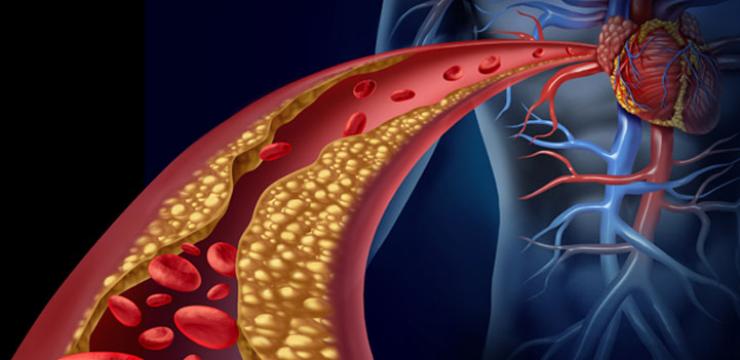
- Excerpt
When a weak spot develops in the inner lining of the vessel, the middle layer, the media, is exposed to the blood. In the absence of the protective inner lining, the body tries to protect the media layer by fixing the “wound” in the intima by filling it with substances taken from the blood. Unfortunately, the substances that are readily available to form an emergency plaster are fats and calcium. By fixing the problem with them, the vessel handles an emergency but creates a long-term problem because this kind of calcification turns the arterial vessels into inflexible bonelike tubes. The afflicted blood vessels are no longer able to let sufficient blood pass because they no longer widen with every beat of the heart. So, less oxygen and fewer nutrients are going to the tissues, and less carbon dioxide and waste material are being taken away. Tissue with insufficient blood circulation may suffer from infarction. If a calcified vessel breaks, a blood clot forms, and this action will definitely prevent oxygen supply to a certain area. Anoxia, the technical term for insufficient blood/oxygen supply, is the result of atherosclerosis (plaque) as well as of calcific sclerosis.
Complications of atherosclerosis include:
• Calcification of the atheromatous plaque
• Ulceration or rupture of plaque
• Thrombosis
• Hemorrhage into the plaque
[…..]
In Masquelier’s opinion, an infarction is the result of anoxia that is accompanied by the arising of an excess of free radicals. In his U.S. Patent 4,698,360, he precisely described these events to support the claim that OPCs work in preventing cardiac or cerebral infarction for an additional reason. According to Masquelier, a lack of oxygen in the tissues of the brain causes psychic and somatic problems, which manifest themselves in their worst form as stroke, TIA, or Alzheimer’s disease. Lending insight from Masquelier’s “‘360” patent, the cascade of events that lead to these problems begins with a lack of oxygen that produces a chain reaction that eventually leads to the formation of free radicals. An excess of these free radicals cannot be kept in check by the body’s own enzymes that scavenge free radicals. The free radicals then attack the cell membranes of the nervous tissue, leading to the phenomenon Masquelier described as “cerebral involution.”
[…..]
Almost the same phenomenon can be described for the process that leads to arteriosclerosis and infarction of the cardiac muscle. In many people, vascular aging begins at an early age, depending mostly on lifestyle and diet. Obviously, progressed forms of vascular aging lead to anoxia because the blood can no longer take oxygen to the surrounding tissues. As in a vicious circle, the lack of oxygen generates free radicals, which in turn cause the oxidation of fats, cholesterol, and lipoproteins. In this way, the process of free radical damage, which is the very cause of vascular impairment and the ensuing hypoxia, is perpetuated in a self-stimulating process that will eventually also modify the blood-clotting particles, the platelets. Thus, blood clots (thrombi) are formed. The thrombi then close the capillaries and the hypoxia spreads to a larger area. When these events take place in the heart, this anoxious area becomes so large that an infarction occurs when part of the heart muscle dies and changes into scar tissue. To stop free radicals from initiating and enhancing this vicious cycle of events, OPCs are recommended as nutritional antioxidant support for the prevention of cardiac or cerebral infarction.
[…..]
There is a related phenomenon that Masquelier always vividly explained. This has to do with the recovery phase after an infarction or period of hypoxia, when the inadequately supplied tissue begins to receive fresh blood and oxygen. Masquelier pointed out that the reintroduction of oxygen into previously bloodless or undernourished tissue triggers the release of an excessive number of free radicals. This reintroduction of oxygen into anoxious tissue is called reperfusion. It is also at this moment of reperfusion that the destructive effect of anoxia manifests itself in the cardiac muscle. It is a kind of free radical aftershock that is especially relevant when the heart has been without blood either because of infarction or a bypass or other heart operation. Introducing blood into the heart muscle after a period of anoxia causes an excess of free radicals. This is why the critical moment in heart operations is not during the operation but right after, at the time of reperfusion. A similar process can be observed in prematurely born children when they are accidentally supplied with excessive oxygen in an incubator. The result could be blindness or even death, which means that the oxidative stress in the cells is responsible for the fatal development. In the case of refilling the heart muscle with fresh blood, OPCs help to keep the additional free radicals at bay, thus averting problems at a critical time.






